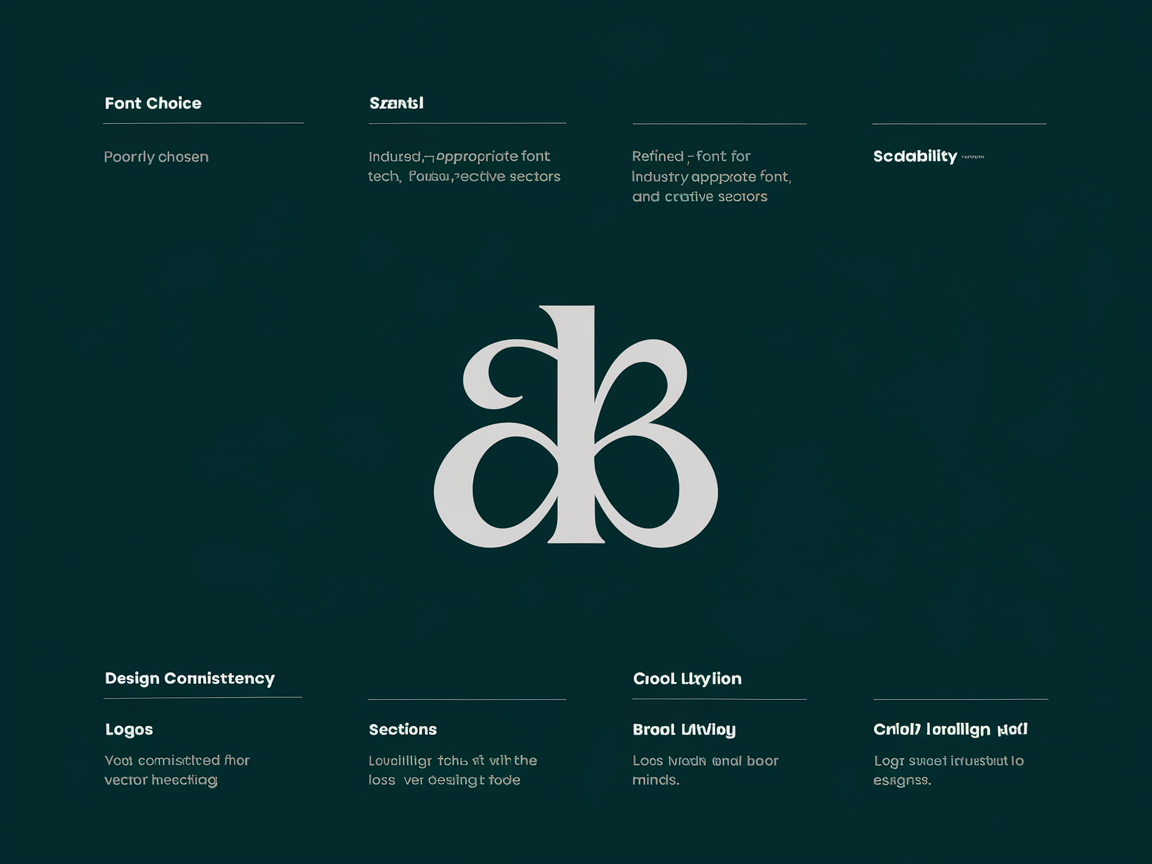Crafting the Perfect Lettermark Logo: Key Mistakes to Avoid
Introduction: Why Lettermark Logos?
In the vibrant world of branding, logos are more than just images; they are the visual foundation of a company’s identity. Think of the effortless recall you get from a glance at IBM, CNN, or HBO. These are prominent examples of lettermark logos—logos that use a brand's initials for simplicity and memorability. But what makes a lettermark logo essential for your brand identity?
Lettermark logos distill your brand down to its initials, offering unique advantages, especially for brands with lengthy names or where initials are more catchy. This blog shines a light on crucial mistakes to avoid in lettermark logo design, ensuring your logo is effective and aligns seamlessly with your brand's vision.
1. Choosing the Right Font
Why is Font Choice Important?
Fonts do more than just look good—they set the tone for your brand. Each font evokes distinct emotions. A classic serif might project tradition and reliability, perfect for law firms. Meanwhile, a sleek sans-serif can convey modernity and innovation, ideal for tech companies.
What are Common Mistakes in Font Selection?
Choosing a font that clashes with your brand identity is a common pitfall. Imagine a playful font underselling a corporate brand's seriousness or a formal font missing the creativity mark for an agency.
How to Choose the Right Font?
- Align font choice with your brand message.
- Prioritize readability.
- Consider industry norms.
- Opt for unique yet timeless fonts.
2. Ensuring Scalability
What is Scalability in Logo Design?
Scalability ensures your logo looks impeccable, whether on a business card or billboard. A scalable logo maintains clarity and impact regardless of size.
How Does Poor Scalability Affect a Logo?
Beware of designs that lose clarity when resized. A detail-rich logo might look sharp on a billboard but become unrecognizable on a mobile screen.
How to Ensure Scalability?
- Use vector-based designs to maintain quality at any size.
- Keep designs simple to retain clarity across various platforms.
3. Avoiding Overcomplicated Designs
Why is Simplicity Powerful in Logo Design?
Simple designs are memorable and versatile. They ensure your logo is easily recognizable and adaptable to different applications, from print to digital.
What is the Pitfall of Overcomplicated Designs?
Too many details can confuse and dilute your brand’s message, making it harder for audiences to grasp your brand essence quickly.
How to Achieve a Simple Logo Design?
- Distill your design to essential elements.
- Ensure clarity and purpose.
- Every aspect should enhance the brand representation.
4. Aligning with Brand’s Purpose
How Does a Logo Connect with Brand Values?
A logo should embody your brand values and purpose, becoming more than just a graphic—it's a reflection of your mission and connection with your audience.
What Happens When Logos Lack Brand Purpose?
Purely aesthetic logos risk being forgettable or misleading, potentially alienating your audience.
How to Incorporate Brand Values?
- Hold workshops to explore your brand's mission and values.
- Let your findings inform your logo design for effective communication.
5. Limiting Color Usage
Why is Color Choice Crucial in Logo Design?
Colors evoke emotion and boost brand recognition. Strategic color application fosters a powerful emotional connection.
What Mistakes Should You Avoid with Color?
Overusing colors or mismatching hues leads to confusion and weakens impact. An overly colorful logo may seem chaotic and unprofessional.
How to Choose the Right Color Palette?
- Stick to one or two signature colors for a strong identity, like HBO or IBM.
- Ensure colors reflect your brand's personality and resonate with your audience.
Additional Insights: The Advantages of Lettermark Logos
- Compact Design: Focuses on initials, avoiding extra details.
- Boosts Recognition: Simplicity enhances memorability.
- Reflects Brand Strategy: Aligns with brand ethos, mission, and objectives.
Conclusion: The Road to Timeless Branding
Avoiding these common pitfalls is crucial to crafting a lettermark logo that is not only visually compelling but also deeply representative of your brand ethos. By prioritizing font choice, scalability, simplicity, brand alignment, and color, your logo will not only stand the test of time but also become a key pillar of your brand identity.








